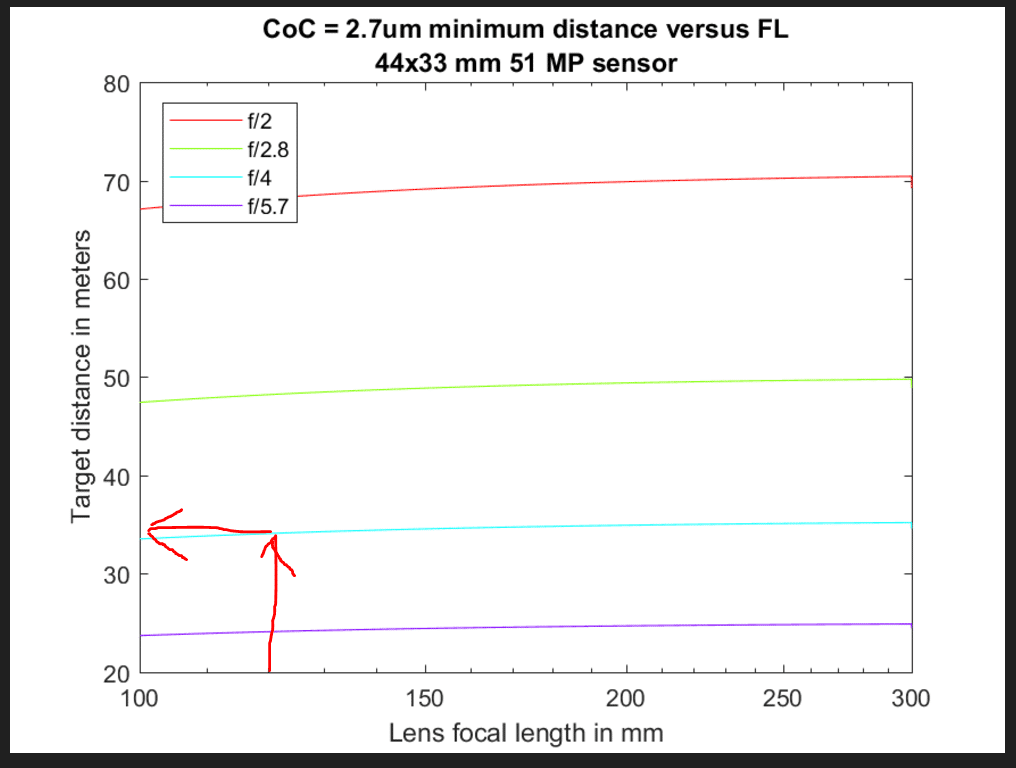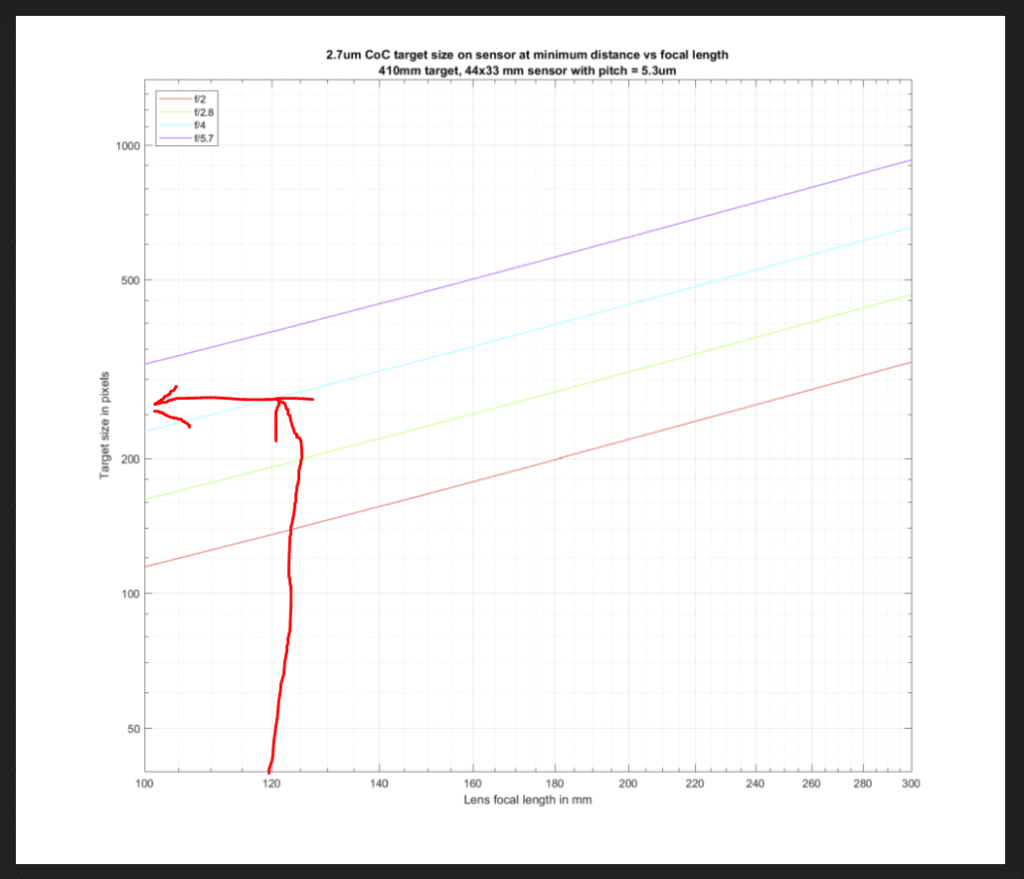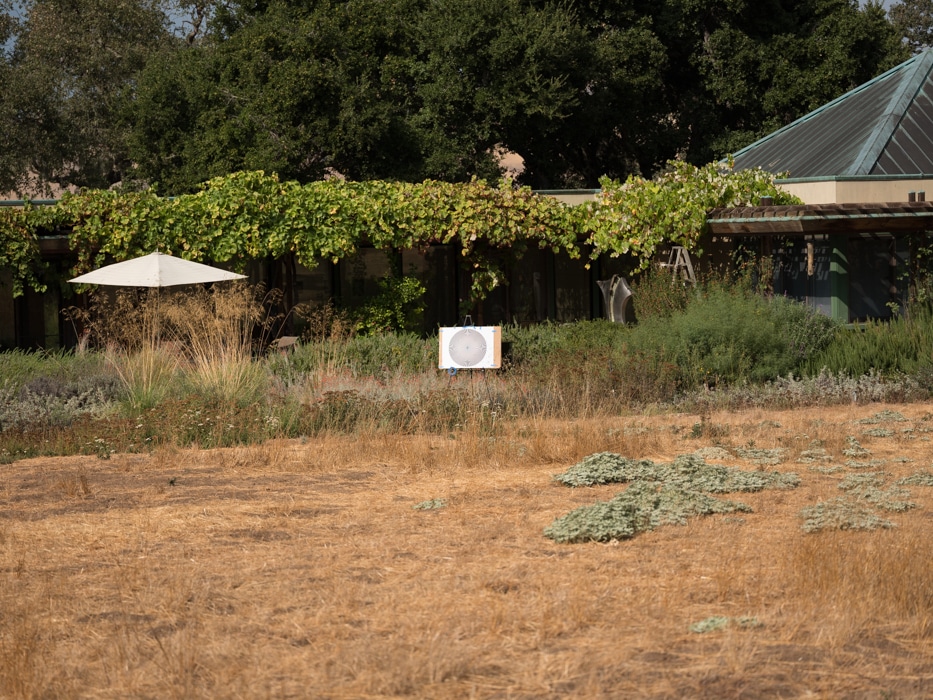On this page, I’ll walk you through a test of a Fuji 120 mm f/4 macro lens on a Fujifilm GFX 50S body. The lens turns out to be superbly assembled.
We want to test the lens wide open. We consult the minimum distance chart:
35 meters is the required distance. I used 37.
Checking target size:
A 16-inch star will be about 300 pixels on the sensor. I used a 22.5 inch star, which will be even bigger.
The image is underexposed by conventional standards to keep the target well away from clipping.
A center crop, somewhat magnified:
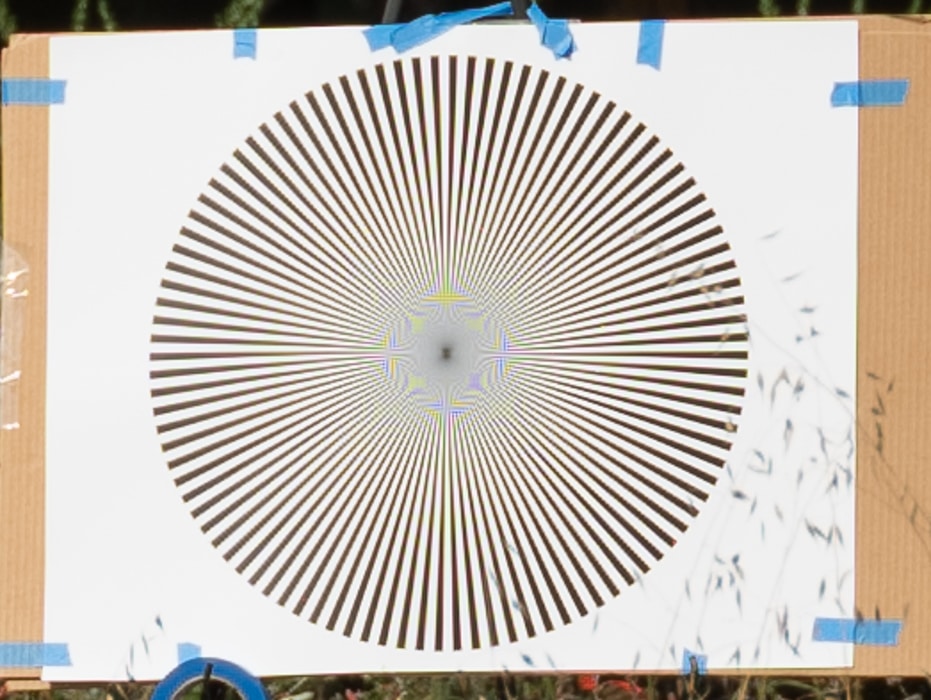
Ignore the out-of-focus grass. You can see both moire and false color in great profusion. The image is well focused.
If we consider the images in opposite pairs we can look for differences that aren’t radially symmetric. If sufficiently bad, these departures from symmetry are indicators of improper assembly.
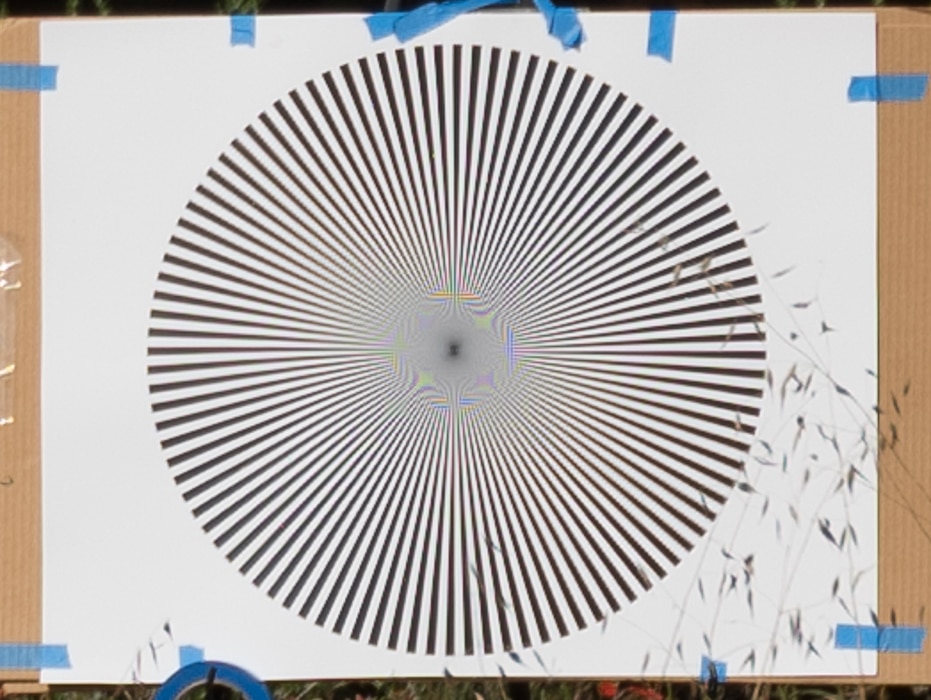

If anything, the upper left image is sharper than the center. Both corners above show sub-pixel resolution on the part of the lens.

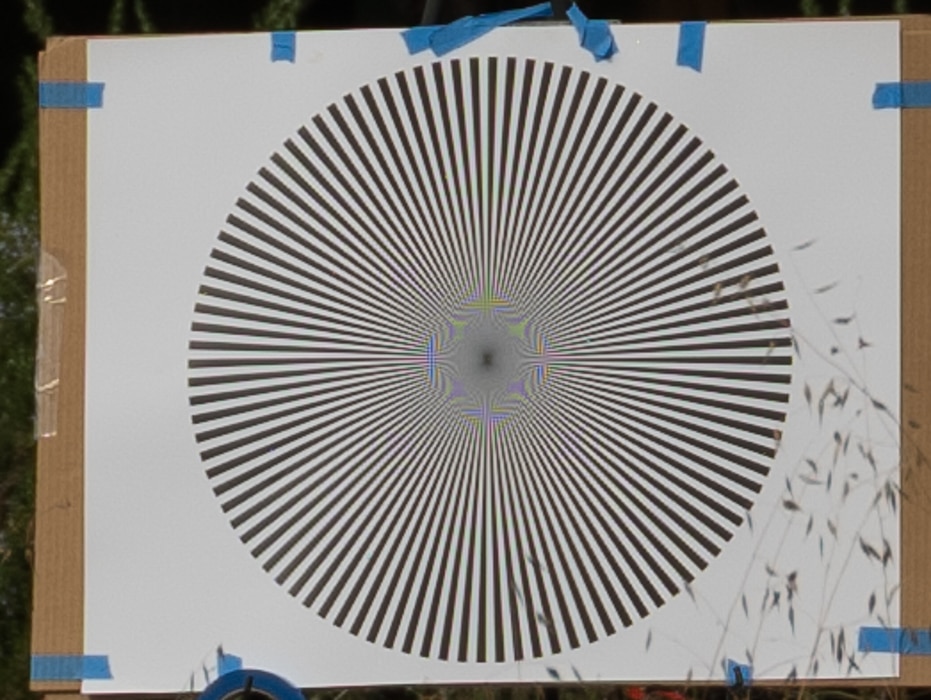
No difference in sharpness. Sorry about the density differences; it was a partly cloudy day with fast winds aloft.

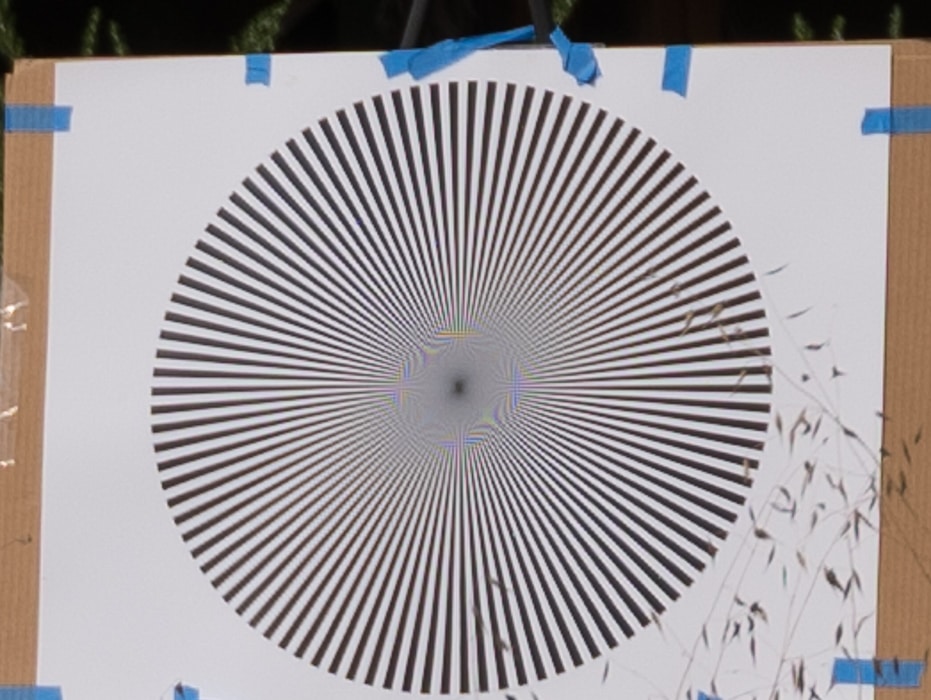
Again, virtually no difference.

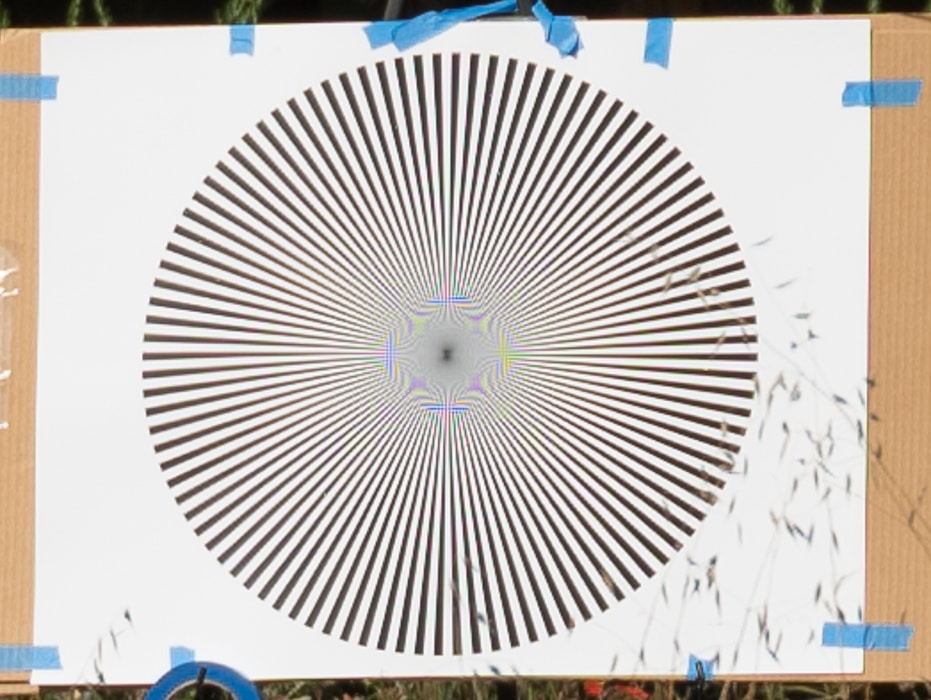
Not only is this lens well put together, it is an incredible performer at the periphery of the frame, offering virtually the same sharpness there as it does in the center. And that’s wide open.
